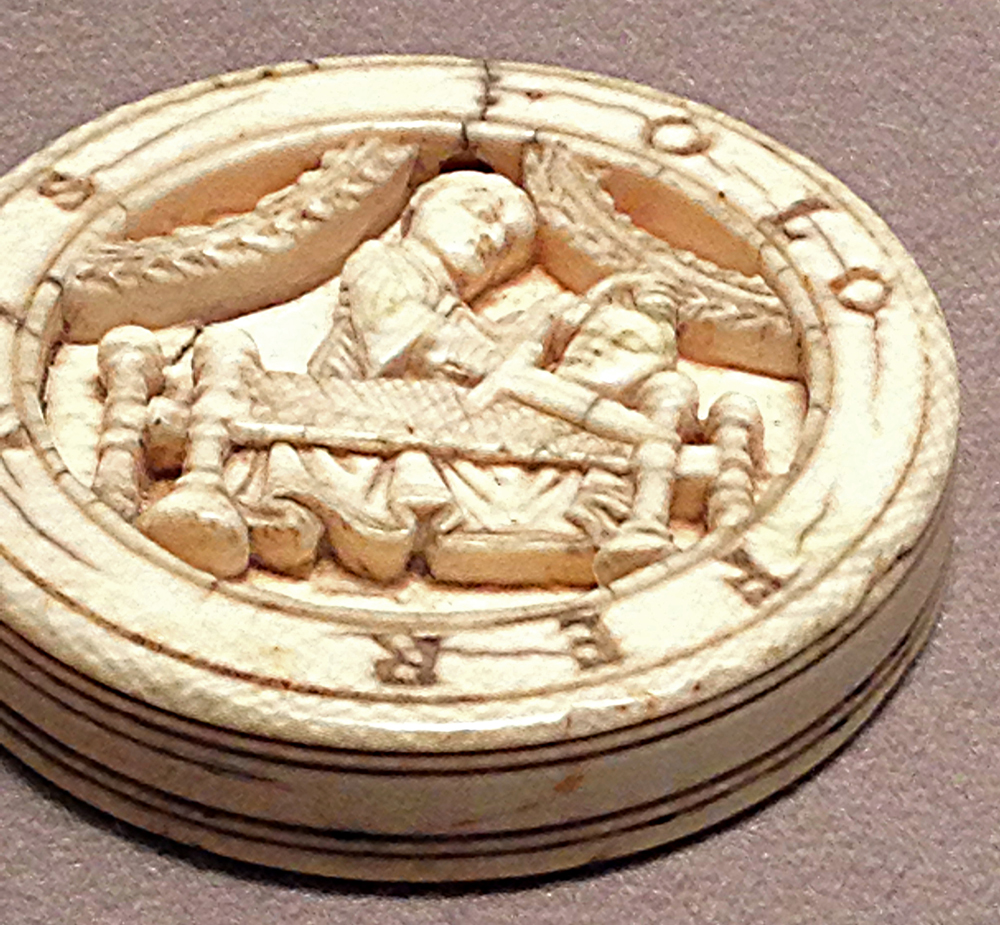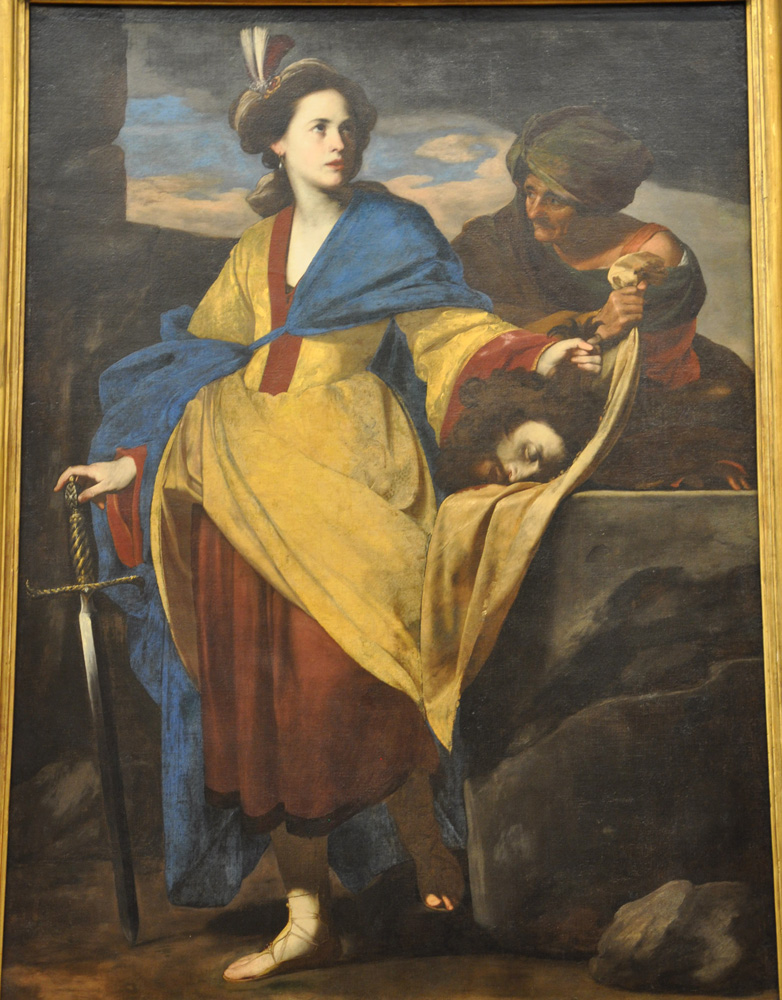Judith was a favorite subject in the Renaissance. Narrative images most often represent the beheading. The portraits almost always use the head as an attribute, as in the second picture at right. Both types will often include the maid. In modern times the plot has been adapted by films such as Judith of Bethulia (D. W. Griffith, 1914) and Cat Ballou (Elliot Silverstein, 1965).
The Book of Judith is in the Latin Vulgate and is accepted as canonical in Catholic Bibles, but it is not in the Protestant canon.
Prepared in 2014 by Richard Stracke, Emeritus Professor of English, Augusta University
HOME PAGE

12th-century backgammon checker (See the description page)

Portrait by Massimo Stanzione, 1640 (See the description page)
MORE IMAGES
- 1462: The Bibliotheèque Nationale de France's website has the woodcuts in Die Vier Historien that illustrate the Book of Judith, folios 36v to 41r.
- First half of the 18th century: In this painting Jacopo Amigoni presents not the decapitation but the subsequent dumping of Holofernes's head in the sack.
- 1807-13: This relief sculpture of Judith killing Holofernes is part of an iconographic program on the west façade of Milan's cathedral that contemplates Judith, Jael, and Eve as types of the Virgin Mary and the Church.
DATES
- According to Caxton, Judith's legend "is read the last Sunday of October" in English churches. She is not listed in the Roman Martyrology for any date.
BIOGRAPHY
- Caxton's addition of Judith's story to the Golden Legend: html or pdf
- Judith, the Anglo-Saxon poem: original or translation